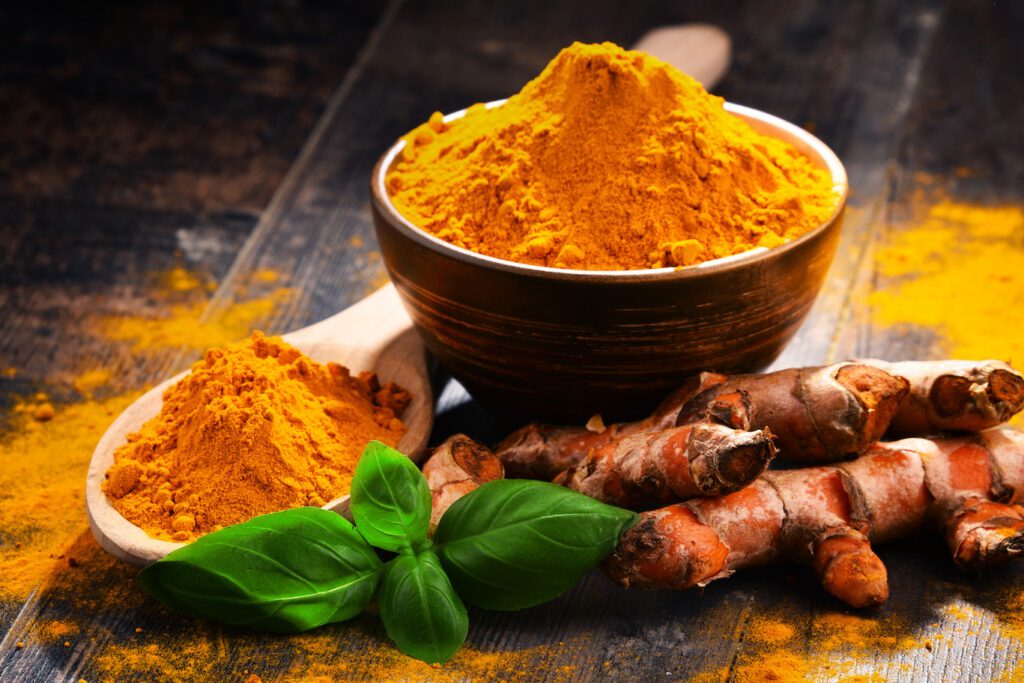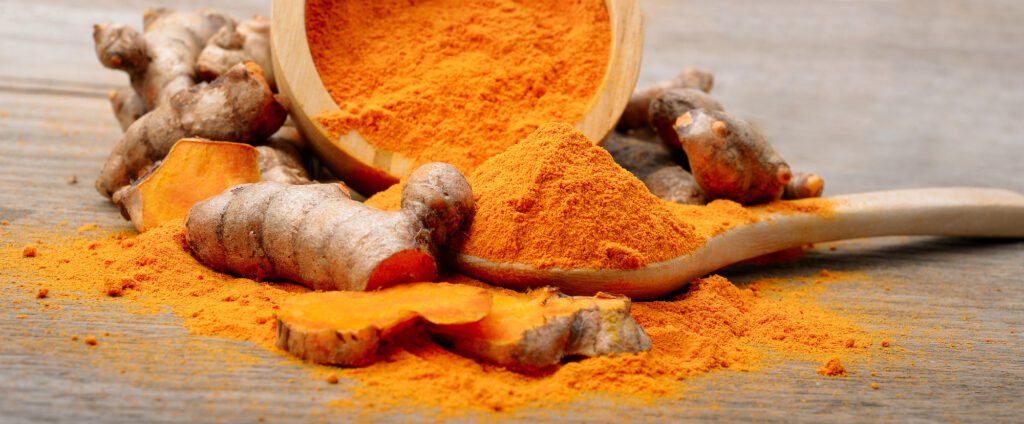
Curcumin – can it help with osteoarthritis and pain?
Turmeric and its component part, curcumin, is a popular supplement. It is recommended in nutrition clinics and bought over the counter by individuals looking for solutions to a range of health complaints. The science continues to build for this bright yellow spice and its use as an anti-inflammatory. But what about studies looking at effects on conditions such as osteoarthritis? This blog post looks at turmeric and curcumin – can it help with osteoarthritis and pain?

Curcumin – what is it?
Curcumin is the component of turmeric that provides the bright yellow colour to the spice that many are familiar with. A common ingredient in Indian curries and a member of the ginger family, turmeric provides an earthy flavour and rich colour to many delicious dishes.
Curcumin and other curcuminoids are polyphenols found in turmeric that exhibit anti-inflammatory properties and other health benefits. It can be extracted from the turmeric root to produce supplements that offer higher potency than is possible through eating the spice alone. Many individuals experiencing some form of pain reach for curcumin supplementation. However, it is poorly absorbed in the digestive tract and needs some help to cross into the blood stream for delivery around the body. So that describes curcumin – can it help with osteoarthritis and pain?
Curcumin and other curcuminoids are polyphenols found in turmeric that exhibit anti-inflammatory properties
Research continues but combining curcumin with piperine (a component of black pepper) or with lipids can help with absorption. Getting some advice on which supplement to choose from someone trained in the art (such as BANT registered Nutritional Therapists) is important. All supplements are also be checked for safety when combined with prescription medications by BANT NTs. Never assume that because it is natural, it is safe for you to take. Always seek some advice.
Curcumin – can it help with osteoarthritis and pain?
Supplementation with curcumin has been shown to reliably reduce markers of inflammation. CRP and ESR are 2 common markers of inflammation tested by NHS GPs. Curcumin is being researched across many health conditions, from cholesterol management, blood glucose regulation to depression and anxiety. Current research shows small to moderate improvements in pain and function associated with osteoarthritis, so it is one worth considering. It is likely to form part of a combination of support (read this blog for information on a recommended core supplement protocol for osteoarthritis). It seems to work for some but not for others.
Curcumin – options for increasing your intake

One easy way to increase your intake is to routinely include turmeric spice in your meals. Delicious in curries, it can easily be added to soups and stews, incorporated into dressings and sauces and even added to smoothies. Whether you choose to supplement or not, add some of the spice to your diet.
One of the problems with curcumin, and a focus of much attention, is that it is poorly absorbed in the digestive tract. There are 2 main ways that supplement manufacturers address this issue: using piperine (an extract from black pepper) or combining it with some lipid form. Both forms are well studied and have been shown to work. Just a caution with piperine: it temporarily increases intestinal permeability (the gaps in your small intestines that allow digested particles to enter the blood stream). If you are taking medications, or suffer with digestive problems, this could potentially cause problems. Always seek advice when thinking about supplementing.
One of the problems with curcumin is that it is poorly absorbed in the digestive tract
Lipid curcumin combinations are also available and appear to have similar positive effects at a lower therapeutic dose, so may be a good option.
Dosages for both supplement types vary from 400 – 1500mg daily in research studies.
Always seek advice when considering supplementation, especially if you are taking any prescription medications or have a diagnosed condition.
Curcumin – are there any drawbacks?
Poor absorbability from oral ingestion has already been mentioned. Serious adverse affects even at high doses have not been reported, but long term studies have not been conducted. These are needed. Some individuals experience some nausea, diarrhea, headache, skin rash and a yellow stool. Taking the supplement together with food can mitigate against some of these reactions.
So, curcumin can help with osteoarthritis and pain and its use is well supported by the science. Not everyone will experience benefit, but there are few compounds on the market that can promise that. It is best considered as part of a combination of supplement support for osteoarthritis and pain. Read more here about a recommended baseline supplement protocol for joint health. If you have a diagnosis of osteoarthritis and would like to discuss your nutrition and supplement requirements with Clare, you can book a free call here.

Other blogs that may interest you:
